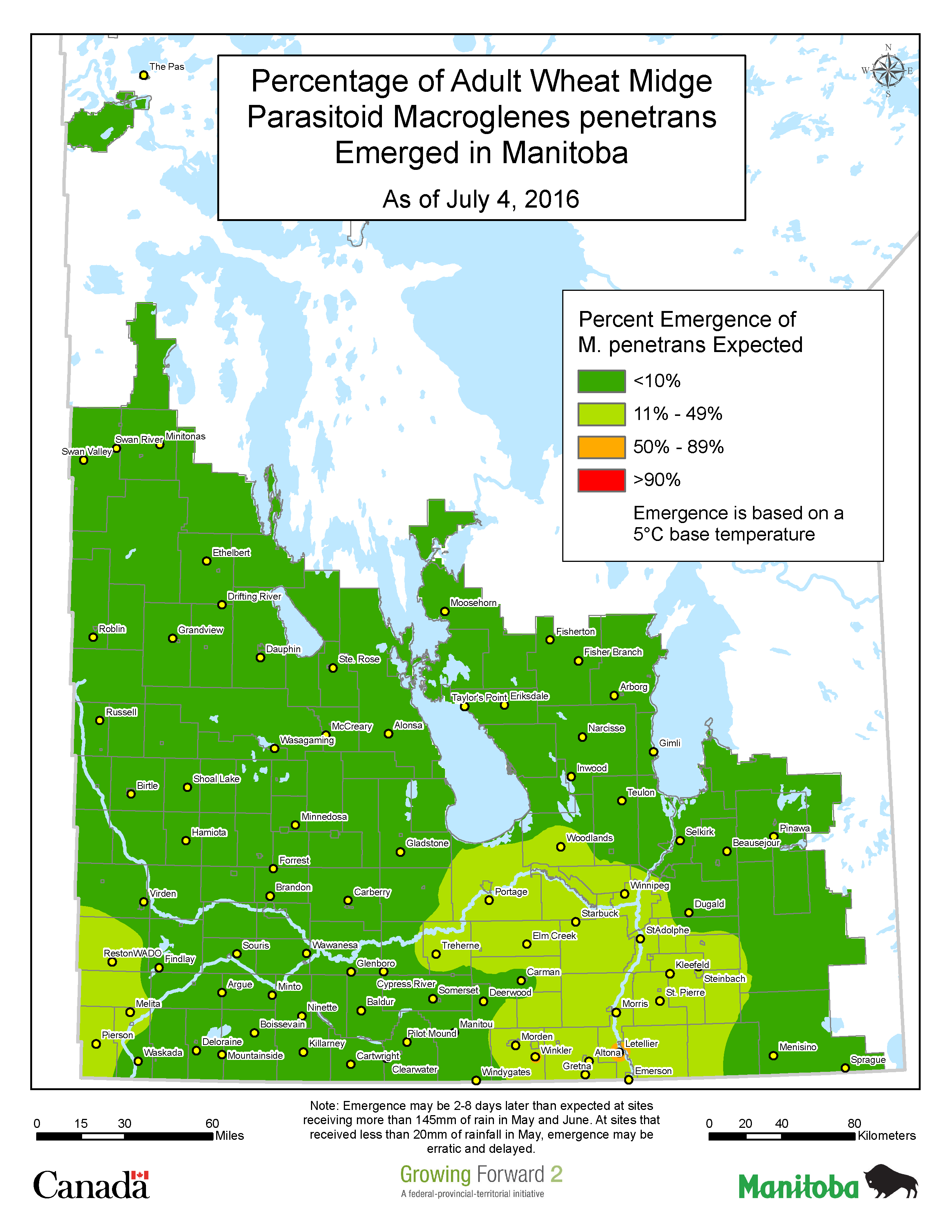Manitoba Insect & Disease Update
Issue 8: July 6, 2016
Summary
Insects: Alfalfa weevil is still present in alfalfa fields, although levels of larvae may be declining in some fields. Pea aphid levels are still a concern in some pea fields..
Plant Pathogens: Brown spot and anthracnose were reported in soybeans. Bacterial blight is also being found in soybeans.
Aphids in Peas
The following can be used to decide if it is economical to manage aphids in field peas:
Economic threshold: For pea aphids in field peas, if at the beginning of flowering there are on average 2 to 3 aphids per 20 cm of plant tip or at least 90 to 120 aphids per 10 sweeps on average, an insecticide application when 50 percent of plants have produced some young pods will be cost effective.
At what stages would aphid management be economical in peas: Research from Manitoba has found that yield was enhanced most when a single application was made as soon as 50% of the crop had young pods. Control at the early pod stage provides protection through the pod formation and elongation stages, which are very sensitive to aphid damage.
Most of the damage that aphids do to peas is to the pods before they start to fill. If you think that most of the pods have already started to fill, spraying would be too late and would not be economical.
Emergence of wheat Midge
The following map shows the percent of wheat midge that are expected to have emerged, based on models using degree days to calculate percent emergence. Wheat midge emergence has started in Manitoba. In many areas it may only be about 10% or less of the wheat midge that have emerged (green on the map). Some areas of Central and Southwest Manitoba may have closer to 50% emergence (yellow on the map).

A reminder that wheat that has already produced anthers is no longer susceptible to feeding by wheat midge.
Note: Emergence may be 2–8 days later than expected at sites receiving more than 145 mm rain in May and June.
Note: Emergence may be 2–8 days later than expected at sites receiving more than 145 mm rain in May and June.
The prime parasitoid of the wheat midge, Macroglenes penetrans, should also be emerging. The map below shows its emergence. Note how well its emergence is synchronized with that of the wheat midge.

Insect Monitoring Programs
Bertha armyworm: So far cumulative trap counts for bertha armyworm are mainly in the low risk range (less than 300), although a few counts in Northwest (NW) and Southwest (SW) Manitoba are in the uncertain risk range. Highest counts, as of July 6 are:
| Location | Count |
|---|---|
| Benito (NW) | 569 |
| Durban (NW) | 509 |
| Kenville (NW) | 462 |
| Minto (SW) | 435 |
| Lena (SW) | 370 |
| Roblin (NW) | 368 |
| Minto (SW) | 348 |
| Tummel (NW) | 256 |
For uncertain risk the precaution we use is that economic levels of larvae may not be widespread, but fields that were particularly attractive to egg-laying females could have higher levels. Check your fields.
Note that there are times when we get to these levels, and no economic levels of larvae occur.
Also, higher levels of larvae, should they occur, may or may not be in the fields that the traps are in.
Also, higher levels of larvae, should they occur, may or may not be in the fields that the traps are in.
Compiled by:
John Gavloski, Entomologist Pratisara Bajracharya, Field Crop Pathologist
Manitoba Agriculture Manitoba Agriculture
Phone: (204) 745-5668 Phone: (204) 750-4248
To report observations on insects or plant pathogens that may be of interest or importance to farmers and agronomists in Manitoba, please send messages to the above contacts.
To be placed on an E-mail list so you will be notified immediately when new Manitoba Insect and Disease Updates are posted, please contact John Gavloski .
